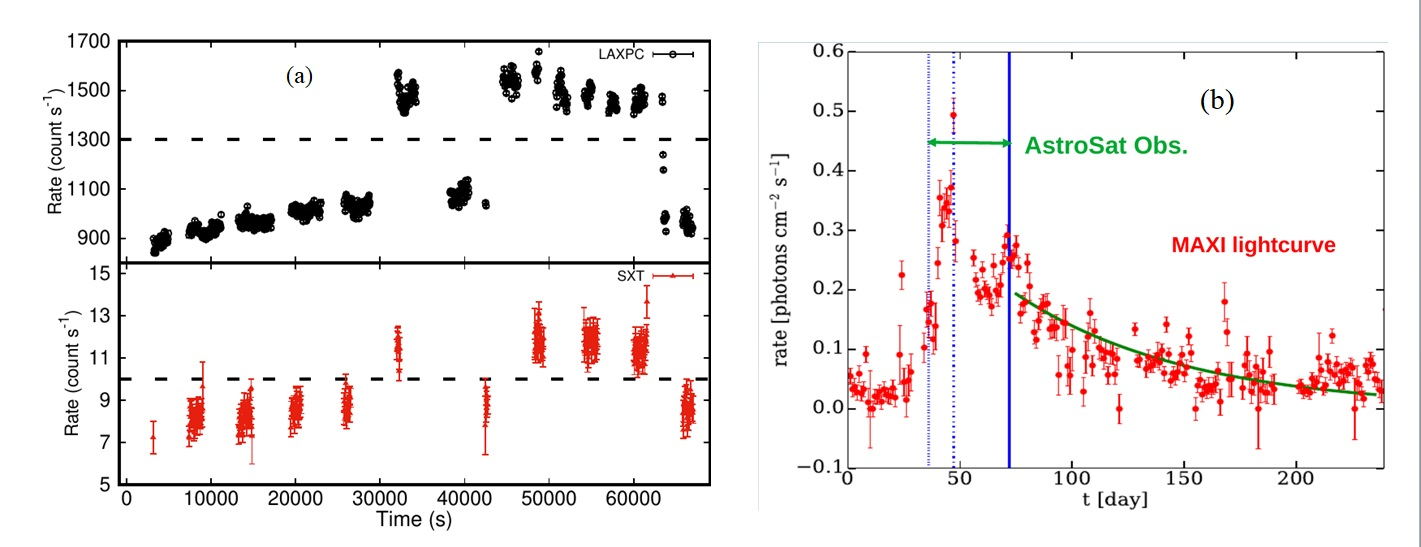Scientists probing a relatively obscure black hole binary consisting of a collapsed star and a normal star located in the Milky Way that shows rapid flux change in a small intervals of time have found that the clue to its strange behavior lies in the change in rate at which particles are accumulated into the stellar system—mass accretion rate.
Swift J1658.2–4242, the Galactic X-ray binary discovered by the Burst Alert Telescope instrument on board Swift observatory of NASA in 2018, is a black hole transient that spent most of its life in quiescence and was discovered when it entered into outbursts characterized by abrupt changes in their X-ray luminosity by several orders of magnitudes. Such binary systems, in which the black hole pulls the material from the companion star and forms a disk around the compact object, are visible in all wavelengths, from radio to gamma rays. However, estimation of mass using optical photometric and spectroscopic analysis (dynamical mass measurements) of only 20% X-ray binaries they are available using optical observations due to the limited resolution. But such binaries are frequently monitored in the X-ray wavelengths, which are highly variable. Studies of parameters and geometry of X-ray binary systems are important as they provide an ideal platform to study the behavior of matter and radiation in extreme conditions, and scientists are exploring these characteristics through spectral-timing analysis, which examines the energy and temporal properties simultaneously.
Recently, researchers from the Indian Institute of Astrophysics, an autonomous institute under the Department of Science and Technology (DST), Govt. of India, studied the spectral and temporal properties of the black hole X-ray transient source, Swift J1658.2–4242 in Milky Way galaxy using observation from AstroSat -- India’s first multi-wavelength astronomy satellite, to understand its parameters and geometry. The team consisting of Ramanujan Fellow Dr. Santanu Mondal, and Dr. Jithesh V, Assistant Professor, Department of Physics and Electronics (DST-FIST funded department), CHRIST (Deemed to be University) found that the mass of the black hole is 14 times the mass of the Sun and that the corona is a compact and dynamic, Its mass accretion rate as well as size of the dynamic corona changes considerably.
Their study was accepted for publication in Monthly Notices of the Royal Astronomical Society (MNRAS), a journal assessed that theoretical upper limit to the mass of a star or Eddington rate mass is accreted by the black hole. The researchers suggested that this changing mass accretion spills over the disk (disk outflow), obscuring the central radiation, thus attributing the strange flip-flop behavior of the stellar system to its changing mass accretion.
In addition, the decay profile of the light curve gives clues about the decay- timescale (around 77 days), which in turn depends on the mass accretion and the size of the disk. The study can improve our understanding of binary systems, helping us explore the behavior of matter and radiation in extreme conditions.
Publication link: https://doi.org/10.1093/mnras/stad1058
For further details, please contact Santanu Mondal at santanu[dot]mondal[at]iiap[dot]res[dot]in

Figure 1: (a) LAXPC (upper panel; black points) and SXT (lower panel; red points) light curves of the source observed by AstroSat. The dashed horizontal lines are demarcating two flux levels. (b) MAXI light curve of the source. The vertical blue lines are the AstroSat observations and the green line shows an exponential fit to the decay of the light curve; gives the estimation of the light curve decay timescale.






























